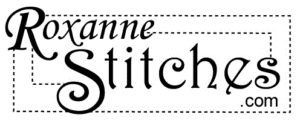Hi Everyone! I’m so happy that even though my 8 week pattern fitting series, “My Approach to Successful Pattern Fitting” ended weeks ago, so many of you are still discovering it and finding it helpful!! I continue to receive emails with comments and questions fairly frequently. Earlier in the series I did my first Q & A blog. Since then I’ve been answering the emails individually, but several questions have come up repeatedly so I thought it would helpful to address them here on the blog.
The Most Asked Question Is:
Q: Why is it important to have someone take my measurements for me? Why can’t I do it myself?
A: The best way for me to answer this question is with an analogy. You would never go into a Couturier to have a garment custom made for yourself and bring your own measurements that you took yourself. Of course you wouldn’t. You would rely on the expertise of the Couturier to take all your measurements. I know that it’s not always easy to find someone to help you with this process, however it’s very important. This is why I took so much time detailing every measurement in a series of photographs. Even if your partner doesn’t know anything about sewing or measuring, with these detailed photo’s it’s possible to get a good set of measurements. Measuring yourself is never as accurate and can be challenging. If they’re not precise, you’re setting yourself up for failure later on by applying inaccurate measurements to your pattern.
Q: Why don’t you include a “high bust” measurement?
A: This isn’t a measurement that I ever used professionally or privately. If you feel more comfortable using a high bust measurement, by all means add it to your measurement sheet.
Q: Why do I need to take so many measurements?
A: It really depends on the garment you’re trying to fit as to how many measurements you will need to record. The fitting series was designed to meet “general fitting” needs. For example, if you plan to make a strapless dress, you will need to modify your measurements to suit those needs. Finished measurements in this case my not include any ease at all. Another example would be for an outerwear garment. More ease may necessary to be included for a garment being worn over other apparel. That amount of ease may also vary depending on the garment underneath being worn. You would need to add more ease to any outwear garment being worn over a bulky sweater and less over a silk blouse.
Q: Why is there so much ease in my sleeve cap? I find it hard to set my sleeve in smoothly.
A: Sleeve caps can be a tricky subject to address. It’s very important to keep several things in mind when working with set in sleeves.
1. Always walk your sleeve around your armhole to determine exactly how much ease your working with. This should be done after your cap height measurement and bicep measurements are correct and your armhole fits nicely on your body.
2. Fabric selection is another very important thing because some fabrics ease in very nicely and other will fight you every step of the way. Typically fabrications with a looser weave will be easier to ease in because they are more easily compressed.
3. It is NOT recommended to move your shoulder notch in either direction to even out ease. This notch is meant to match at a particular point and if you move it in either direction, your sleeve may not hang properly. It IS recommended that you remove 1/8″ or less around the sleeve cap to nothing between your front and back notches. You will be surprised to see be removing even that small amount will help tremendously to ease in your sleeve.
4. Another tip that may also help you ease in your sleeve around the cap is using a smaller seam allowance. A 5/8″ standard commercial pattern seam allowance sometimes makes it more difficult to ease a sleeve in professionally. Try using a 3/8″ seam allowance. There will be a little less fabric around the top of the sleeve cap to fiddle with.
I hope you will find these additional questions and answers helpful. Please feel free to continue to send questions by email or comment when you feel the need.




Thanks for the explanation about the sleeve notch. I recently watched a video on setting a sleeve and the instructor said to rotate the sleeve to even out the ease. That didn't make sense to me. I was taught that sleeves should always hang slightly to the front. So much bad information out there it's gets confusing. Thanks for putting out good information.
Thanks!! Glad it was helpful to you!!